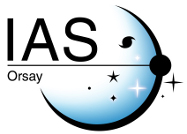Finding the most distant clusters of galaxies
Small temperature and density fluctuations in the early Universe have grown into the cosmic web of dark matter and baryonic matter that we see today. Matter is distributed among large-scale filaments, punctuated by galaxy clusters at the intersection points of this web. Mapping the cosmic history of rich galaxy clusters provides fundamental information about both cosmology and galaxy evolution, motivating vigorous programs to search for large sample of clusters by several teams.
In this talk I will describe current methods, strategies and limitations of several ongoing distant cluster surveys at 1.0 < z < 3 and I will present results from ongoing Spitzer cluster surveys.
The upcoming large-scale survey of Euclid and WFIRST have distant cluster studies as key scientific goal. Spitzer cluster surveys will provide exciting high-redshift targets for those missions, enabling unique, exciting, synergic, multi-wavelength studies of the Spitzer-selected sample, as well as a training set to identify additional high-redshift clusters outside of the Spitzer footprint.



